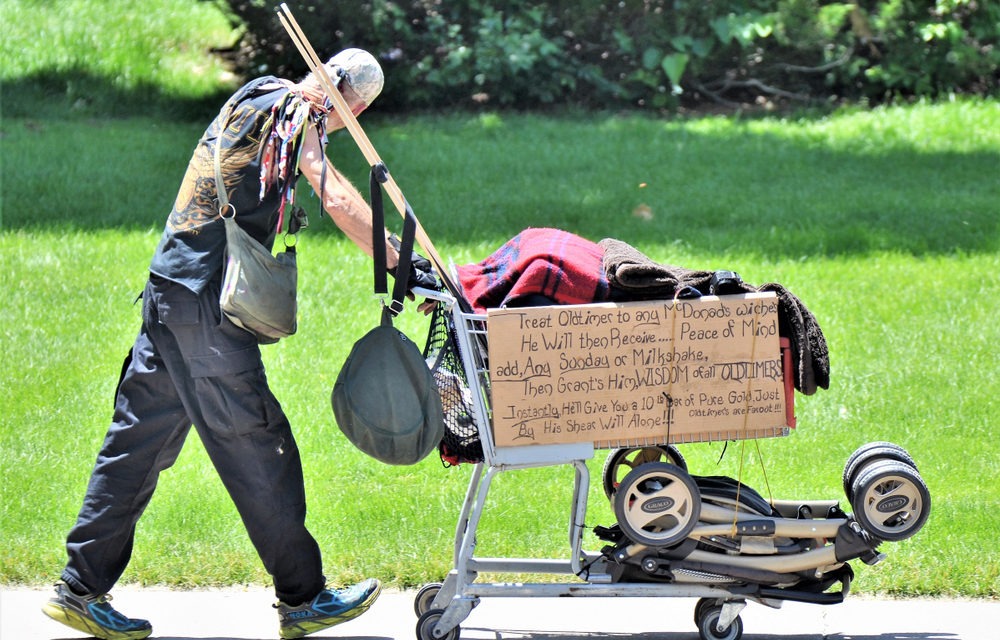New data from Riverside County’s annual 2020 Point in Time survey show the homeless youth population has increased by 41 percent and that one in five unsheltered persons reported losing their housing over the past year.
Riverside County and the University of California, Riverside (UCR), this week, released their January 29, 2020 survey findings. This survey identified 2,884 homeless adults and youths—a nearly 3 percent increase of 73 people who became homeless in Riverside County since the 2019 count.
The federal government requires communities that receive homeless funding to perform an annual census of people living on the streets and in shelters. Results from the one-day tally offer a snapshot of local needs that can help planners better direct resources to end and prevent homelessness.
Count participation by city leaders and community members was up by 13 percent this year over last, meaning that 842 volunteers fanned out across the 7,300 sq.-mile county on a cold and windy early-winter morning to interview unsheltered individuals and families.
“Documenting the scope of homelessness in a county this size requires a community-wide effort and we truly appreciate how people stepped up to help,” Natalie Komuro, deputy county executive officer for Homelessness Solutions, said in a news release. Komuro said county teams worked with UCR’s Department of Computer Science and Engineering to ensure accurate data from the count.
Riverside County’s longstanding priority of housing homeless seniors, age 60 and older appears to be succeeding as the number of unsheltered seniors fell by 7 percent from 2019, Komuro said. The number of veterans on the streets and in shelters saw an uptick of 5 percent, representing 112 lives.
“The numbers of youth, and newly homeless people – counted before the impact of COVID-19 pandemic—should concern us all,” she said.
Special attention was given this year to getting a more accurate count of homeless youth than in years past. In addition to having more than twice the number of volunteers, youth count coordinators did more advance notifications. More volunteers visited locations where homeless youth typically congregate, such as libraries and malls. Komuro said state funding will help the county better address the needs of its homeless youth going forward.
The number of chronically homeless fell by 29 percent — from 727 to 519. However, experts caution that many who live in encampments and on the streets choose not to identify themselves as having a disability, a condition that is required to count a person as chronically homeless.
The Department of Housing and Urban Development adds points for homeless funding in communities that achieve at least a 5 percent reduction in the chronically homeless from the prior year. Komuro said part of the unsheltered reduction can be attributed to having more chronically homeless adults in shelters as well as having more moved to permanent housing, which is not measured by this count.
Komuro said outreach teams from local cities and nonprofit partners were key to identifying vulnerable homeless seniors, pregnant women, and people with underlying health conditions and moving them to local motels since the COVID-19 crisis began in March. Many would be considered chronically homeless.
The county is collaborating with homeless services providers to move clients quickly from hotels to permanent housing in preparation for the easing of public health orders to self-isolate issued in March by Gov. Newsom. Komuro cautioned that the massive loss of jobs that occurred in the wake of the pandemic is presenting new unknown variables in the county’s fight to end homelessness.
“We are grateful to have many partners to help our communities recover from this unprecedented public health and economic crisis,” Komuro said.
Heidi Marshall, director of the county’s newly formed Housing, Homeless Prevention and Workforce Solutions Department (HHPWS) said her agency is working closely with public, private and nonprofit partners to ensure resources are available for those in need of housing or those who are at risk of losing their housing during the pandemic and when it is over.
Both Komuro and Marshall say it is the strength of partnerships and the advocates who continue to serve that will help Riverside County find the solutions for its homeless populations—even among the unknowns that have emerged from the largest public health and economic crisis in generations.
“We are a resilient county, and we are putting the building blocks in place to emerge from this crisis stronger and more innovative than we were before,” Marshall said. “By strengthening the safety net for our most vulnerable neighbors, we are strengthening the very core of our communities.”
For more details about Riverside County’s 2020 Point in Time survey please click here.
Image Sources
- Homeless: Shutterstock







